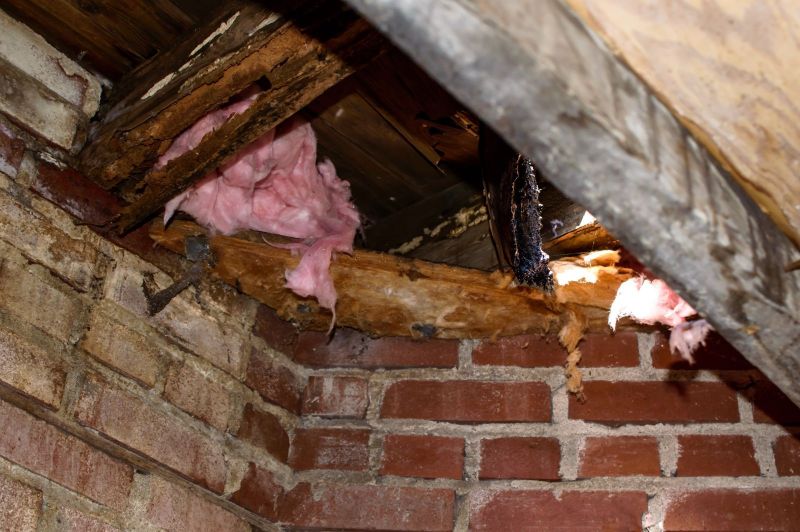Water damage can be a homeowner's worst nightmare. Whether it's due to a burst pipe, a leaky roof, or flooding, water damage can be costly to repair and can lead to further problems like mold growth and structural damage. One question that many homeowners face is whether the water damage in their home is old or recent. In this article, we will explore how to tell if your home's water damage is old or recent and what to do about it.
Signs of Old Water Damage
Old water damage is typically caused by a past event that has since been resolved. The water has dried up, and there is no ongoing leak or source of water. Here are some signs that the water damage in your home is old:
- Discoloration - Water damage that has been around for a while can cause discoloration on walls, ceilings, and floors. This discoloration may be yellow, brown, or even black.
- Musty smell - Old water damage can cause a musty smell, which is a sign of mold growth. Mold can grow in damp areas and can be dangerous to your health, so it's essential to address it as soon as possible.
- Peeling or bubbling paint or wallpaper - Water damage can cause paint or wallpaper to peel or bubble. This is a sign that the water has penetrated the material, causing it to separate from the surface.
- Staining or warping of wood - Water damage can cause wood to stain or warp. This is a sign that the wood has been exposed to water for an extended period.
- Cracks in the foundation or walls - Water damage can cause the foundation or walls of your home to crack. This is a sign that the water has caused structural damage.
If you notice any of these signs in your home, it's likely that the water damage is old. It's important to address old water damage to prevent further damage and potential health hazards from mold growth.
Signs of Recent Water Damage
Recent water damage is typically caused by an ongoing leak or a recent event, like a flood or burst pipe. Here are some signs that the water damage in your home is recent:
- Wet or damp surfaces - If you notice wet or damp surfaces, such as walls or floors, it's a sign of recent water damage.
- Water stains - Water stains on walls or ceilings can indicate recent water damage. The stain may be brown or yellow, and it may have a ring around it.
- Swollen or warped materials - Recent water damage can cause materials like drywall or wood to swell or warp.
- Mold growth - Mold can grow quickly in damp areas, so if you notice mold growth, it's a sign of recent water damage.
- Unusual odors - Water damage can cause an unpleasant odor in your home. If you notice a musty or damp smell, it could be a sign of recent water damage.
What to Do About Water Damage
If you notice any signs of water damage in your home, it's essential to take action. Here are the steps you should take:
- Identify the source - If the water damage is recent, you should identify the source of the water and stop it from causing further damage. This could mean turning off the main water supply, fixing a leaky pipe, or calling a professional to address the issue.
- Dry the area - After stopping the source of the water, you should dry the affected area as quickly as possible. This could mean using a fan, opening windows, or using a dehumidifier.
- Clean up - Once the area is dry, you should clean up any debris or water-damaged materials. This could mean removing carpet or drywall that has been affected by water damage.
- Dispose of mold - If you notice mold growth, it's essential to address it promptly. Mold can cause health problems and can spread quickly, so it's important to hire a professional to remove it.
- Repair or replace damaged materials - After cleaning up and removing any damaged materials, you should repair or replace any materials that have been affected by water damage. This could mean replacing drywall, repairing a damaged roof, or installing new flooring.
It's important to note that water damage can be complex, and it's not always easy to tell if it's old or recent. If you're unsure, it's always best to call a professional for an assessment. A professional can identify the source of the water damage, assess the extent of the damage, and provide a plan for repairs.
Preventing Water Damage
Prevention is always better than cure when it comes to water damage. Here are some steps you can take to prevent water damage in your home:
- Regularly inspect your home for leaks - Check pipes, faucets, and appliances for leaks regularly. If you notice any leaks, address them promptly.
- Maintain your roof - Have your roof inspected regularly and repair any damage promptly. This will prevent water from leaking into your home.
- Clean gutters and downspouts - Clean gutters and downspouts regularly to prevent water from accumulating and causing damage.
- Keep an eye on your water bill - If you notice a sudden increase in your water bill, it could be a sign of a leak.
- Install a sump pump - If you live in an area that is prone to flooding, consider installing a sump pump to prevent water from entering your home.
Water damage can be a significant problem for homeowners. Knowing how to tell if your home's water damage is old or recent is crucial for addressing the problem and preventing further damage. If you notice any signs of water damage, it's essential to take action promptly to prevent further damage and potential health hazards. By taking preventative measures and addressing any water damage promptly, you can keep your home safe and avoid costly repairs.

